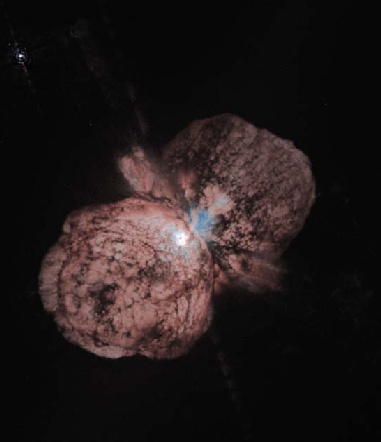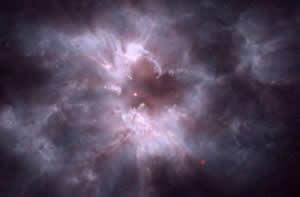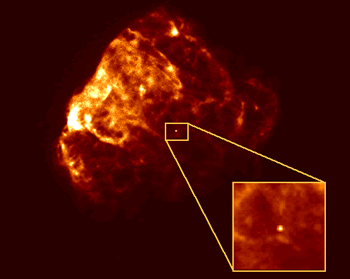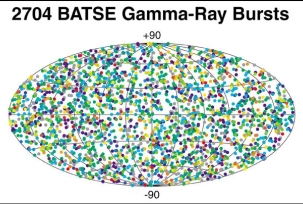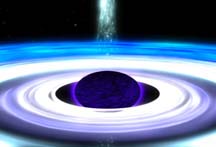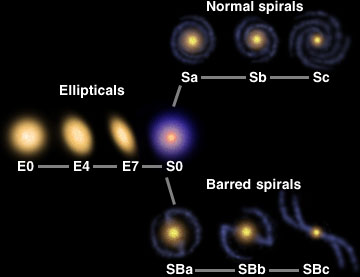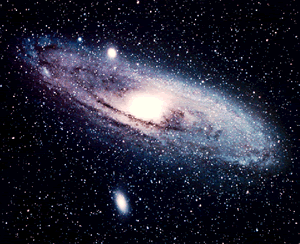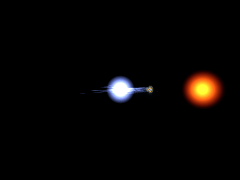Click on image for full size
STScI
Strange Stuff In Space
There is some pretty strange stuff in space. Things which are unlike anything that anyone sees every day on Earth. Things that challenge our ideas about the Universe. Things that are just so weird that even astrophysicists don't know what they are.When stars die they go out in many different ways. When average mass stars, like our sun, die they go by throwing off their outer layers and leaving behind a White Dwarf. When very massive stars die they often blow themsleves apart in a huge explosion called a Supernova. Depending on how massive a star was that went supernova, a Neutron Star or a perhaps a Black Hole may be left behind as a monument to its former glory.
There are still stranger things in space. Not very long ago astronomers were baffled by the mystery of Quasars. These objects look like stars but are much farther away than stars in our galaxy and they are much more luminous than entire galaxies.
There is also a phenomenon (no, not John Travolta) that has caused much excitement and wonder among astronomers called Gravitational Lensing. This is where massive objects, like galaxies and galaxy clusters, actually bend light like a lens, using gravity! Is that wacky or what!?
One of the strangest things in space is the mystery of Gamma Ray Bursts. These are what seem to be random bursts of gamma rays, you know the radiation that transformed Bruce Banner into the Incredible Hulk. They come from every direction in the sky, they never repeat, and they may indicate the most energetic processes ever seen.


